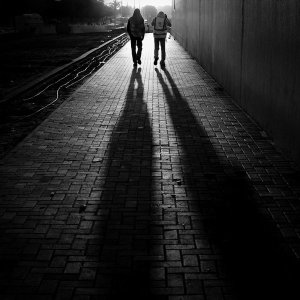One of the worst things about traveling is the food. Not once you’ve reached your destination—once you’re there, your friend takes you to a tapas place and orders a small plate of what he calls “Meat Candy.” Or you happily discover a market that offers all things local, including a breakfast pizza topped with a sunny-side-up egg.
But while en route, it’s another story. Airport food is atrociously overpriced, especially for anything “healthy,” and fast-food makes up 99% of the offerings along our country’s interstates. Since I began eating only meat that’s been sourced appropriately (i.e. from small family farms that ensure humane treatment), fast food and most airport fare have been off the table. And I’ve never felt better. But a road trip is a conscious carnivore’s worst enemy. The only relief from the glow of the Golden Arches and hybrid KFC/Taco Bells are the occasional mom-and-pop sit-down restaurants—Uncle Mac’s, Kountry Kafe, Roadside Inn. Which might be local, but sure aren’t health-oriented or conscious of where their meat comes from.
So on a recent drive, tracing our way from Chicago to Kansas City, I was thinking about our limited options and mourning the loss of all the legitimately good restaurants we were passing by at 76 mph. Maybe there weren’t many, but there had to be a few, even along this route through the Midwest. And it struck me that both of us were missing out: we had to suffer shitty, mass-produced, cholesterol bombs and they had to suffer pathetically low customer traffic, since fast-food crowded them out of the roadtrip market a long time ago.
If only there were a Yelp for highways. A site where instead of a zipcode or city, you put in an interstate number, or a Point A and Point B. And it would bring up all the great restaurants there were from Chicago to Kansas City. Hours, menus, reviews. All the fixin’s.
I didn’t mention my idea until our final day in Kansas City, brunching at Blue Bird Bistro, a spacious, gorgeously decorated, corner eatery in Westside, not two blocks from our friend Derek’s house. Over spinach omelettes and blueberry pancakes and “really good bacon,” with the 8 hours back to Chicago on my mind, I briefly laid out my idea. A Yelp for the road. Derek said, Go look at the story by the door. I tried to explain further. Go look at it, he said. I did. It was a story about a couple who wrote a book called Healthy Highways, which is also now a website. It’s a catalog of healthy, locally owned restaurants along major travel routes all across the country. The latest edition has more than 2,800 entries. Blue Bird Bistro was featured, since it’s right off the 670/35 interchange, hence the newspaper story framed on their wall.
My idea had been taken. But I was happy to have a resource. So I went to www.healthyhighways.com, only to find that it’s a jumbled mess. Not at all a functional, search-and-ye-shall-find Yelp equivalent. This was a cluttered promo site: ONLY $1. SHIPPING. No Matter How Many Books You Order. (US ONLY. BOOKS ONLY). Plus Discount Prices. Everything was highlighted in highlighter yellow. It felt like browsing through an infomercial. Not a single tab was a Search function.
The authors wanted you to buy their book. Well, that’s fine. But with about 6 months in between road trips (I’ll assume that’s fairly accurate for the average American young person working full-time), you’re only getting a few trips in before the book’s out of date. Four at most. And how can Nikki and David Goldbeck know about every healthy roadside place anyway? If a site was built, foodies could create pages when they heard about a new place opening up. Even better, if it was built from the official Yelp platform, existing restaurant pages could be duplicated, even just tagged as “Highway Proximal” so that it appears on the “Roadtrip” page, which could next to the “Events” tab (they’ve even left room!).
Just when I think I’m still on to something, a search turns up Roadfood.com. Looks like what I was hoping for. Well designed. Prominent search function. No highlighter.
It may not turn up anything in Hannibal, MO (which may or may not mean anything), but it does find Canteen Lunch in the Alley, in Ottumwa, IA. Anyone heading through Iowa on 34 or 63 should check that out.

















